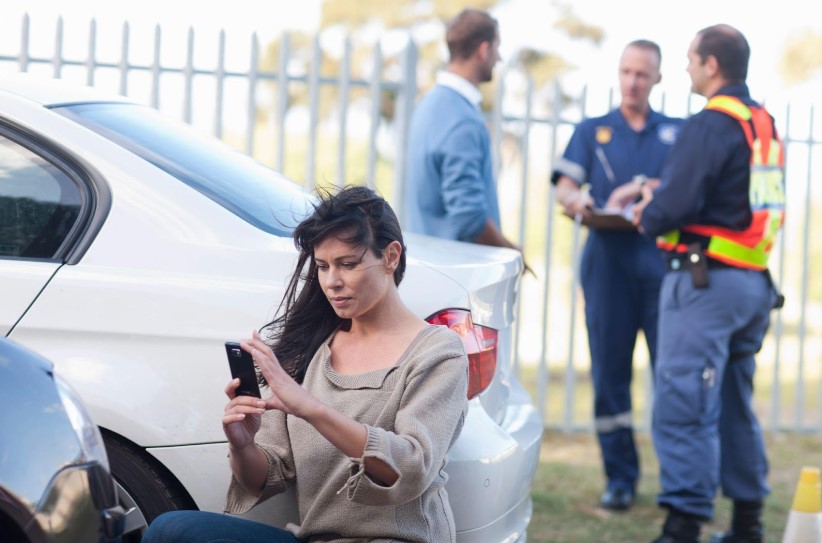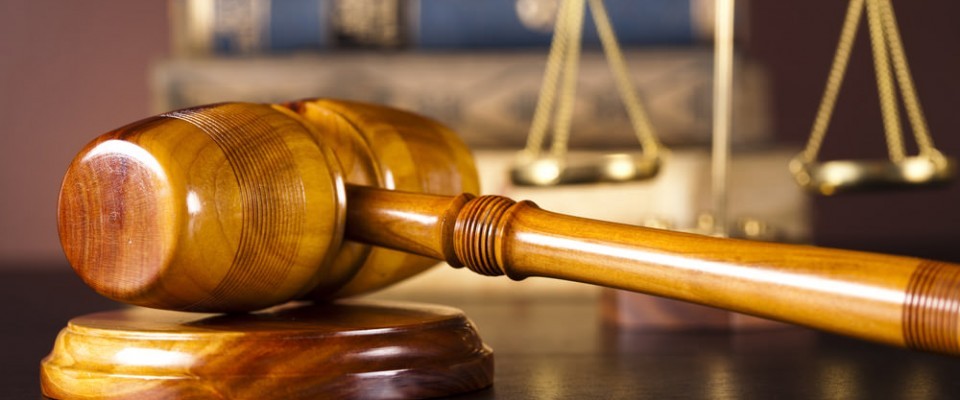
In the chaotic aftermath of a vehicular accident, it’s easy for emotions to run high and for crucial details to slip through the cracks. Yet, the moments following a collision are critical in shaping the trajectory of any subsequent legal proceedings. This is where the importance of meticulous accident scene documentation becomes evident.
Strengthening Legal Cases through Documentation
Accurate and thorough documentation serves as the foundation for building a compelling case. Whether you find yourself in a minor fender-bender or a more serious collision, the details you record in the immediate aftermath can significantly impact the outcome of any legal disputes that may arise.
A well-documented accident scene provides a clearer picture of events leading up to, during, and after the incident. This clarity not only aids in establishing liability but also ensures that all relevant factors are considered.
Whether you’re a driver, a witness, or an involved party, understanding the art of comprehensive accident scene documentation is an invaluable skill in safeguarding your interests and bolstering the strength of your case.
Importance of Timely Documentation
In the aftermath of an accident, time is of the essence regarding documentation. Waiting too long to record details can lead to memory lapses, fading recollections, and potential inaccuracies. Timely and precise documentation is crucial for several reasons.
Memory and Details Fade Over Time
- Human memory limitations: Memories of the accident are susceptible to fading and distortion over time.
- Witness statements: Promptly collecting statements from witnesses ensures the preservation of accurate, first-hand accounts.
Legal Requirements for Timely Reporting
- Statute of limitations: Many jurisdictions have a statute of limitations for filing accident-related claims, emphasizing the need for timely reporting.
- Insurance claim processes: Timely documentation expedites the claim process, preventing complications due to delayed reporting.
To maximize the effectiveness of your accident scene documentation, beginning the process as soon as possible is paramount.
Types of Documentation
Effective accident scene documentation involves a combination of written accounts, photographic evidence, and, when possible, video documentation. Each type plays a distinctive role in constructing a comprehensive narrative of the incident.
Written Documentation
Recording Accident Details
- Document the date, time, and location of the accident.
- Provide a step-by-step account of how the incident unfolded.
Obtaining Statements from Witnesses
- Collect detailed statements from witnesses, including their perspectives on the events leading up to the accident.
Photographic Evidence
Capturing the Overall Scene
- Take wide-angle photos to provide context and showcase the overall accident scene.
- Include traffic signals, signs, and road conditions.
Focusing on Specific Damages and Injuries
- Capture close-up shots of vehicle damages, injuries, and property damage.
- Highlight any visible details that may contribute to understanding the sequence of events.
Video Documentation
Overview of the Surroundings
- Record a video walkthrough of the accident scene to capture the immediate environment.
- Include any relevant factors, such as weather conditions and the state of the road.
Recording Statements and Actions
- Film statements from involved parties, capturing their immediate reactions and perceptions.
- Record any actions taken by individuals at the scene, providing additional context.
Utilizing a combination of written accounts, photographs, and videos enhances the completeness and reliability of your documentation.
What to Include in Written Documentation
When creating written documentation of an accident, you should provide a detailed and accurate account of the incident. The written record is a crucial reference for legal proceedings and insurance claims. Here are key elements to include in your written documentation:
Date, Time, and Location
- Record the exact date and time of the accident.
- Include the specific location of the accident, such as street names, intersections, or landmarks.
Weather and Road Conditions
- Describe the weather at the time of the accident, including visibility, precipitation, and temperature.
- Specify the state of the road, noting any hazards like potholes, construction, or inadequate signage.
Description of Vehicles and Involved Parties
- Provide detailed descriptions of all vehicles involved, including make, model, color, and license plate numbers.
- Document the names, contact information, and insurance details of all parties involved.
Statements from Witnesses and Involved Parties
- Include statements from witnesses, documenting their observations and perspectives.
- Document statements from the individuals directly involved in the accident, including their accounts of what transpired.
Tips for Taking Effective Photographs
Photographs are powerful tools in accident scene documentation, offering visual evidence that can provide clarity and context. To ensure your photos effectively support your case, consider the following tips:
Overview Shots of the Accident Scene
- Take wide-angle shots to encompass the entire accident scene, including the positions of vehicles and surrounding features.
- Document the status of traffic signals, road signs, and any relevant road markings.
Close-Ups of Vehicle Damage and Injuries
- Take detailed shots of damage to all vehicles involved, including close-ups of dents, scratches, and points of impact.
- Photograph any visible injuries sustained by individuals involved in the accident.
Capturing Traffic Signals, Signs, and Road Markings
- Capture the state of traffic at the time of the accident, including the direction of travel for involved vehicles.
- Photograph any relevant road conditions, such as potholes, debris, or skid marks.
Documenting Any Contributing Factors (Skid Marks, Debris, etc.)
- Document skid marks or other tire impressions on the road surface.
- Photograph any debris resulting from the accident and any damage to nearby property.
Using Technology for Documentation
In the modern era, technological advancements offer valuable tools for enhancing the documentation of accident scenes. Leveraging technology can streamline the process and provide additional layers of accuracy and detail. Here are key aspects to consider:
Smartphone Apps for Accident Documentation
Accident Reporting Apps
Explore dedicated apps designed for documenting accidents. These often guide users through the information needed and may include features for capturing photos and recording statements.
GPS and Location Data
Utilize the GPS functionality of smartphones to automatically log the precise location of the accident. This enhances the accuracy of your documentation.
Dashcams and Their Role in Evidence Gathering
Constant Recording
Install a dashcam in your vehicle to continuously record your surroundings. This can provide a real-time account of the events leading up to and following an accident.
Objective Documentation
Dashcam footage is an unbiased witness, capturing details without the influence of emotions or memory lapses.
GPS Data for Location Accuracy
Embed GPS Coordinates
Ensure that photos taken, especially with smartphones, include embedded GPS coordinates. This strengthens the accuracy of your documentation.
Mapping and Reconstruction Tools
Explore digital mapping tools that allow you to recreate the accident scene virtually. This can aid in presenting a visual representation during legal proceedings.
Integrating technology into your accident scene documentation process not only enhances efficiency but also adds layers of precision to your evidence. Whether through specialized apps, dashcams, or GPS functionality, technology can be crucial in fortifying your case.
Organizing and Storing Documentation
Effective organization and secure storage of your accident scene documentation are essential to ensure the information remains easily accessible and unaltered. Consider the following steps to maintain a comprehensive and well-organized record:
Creating a Comprehensive File
- Gather written accounts, witness statements, photographs, and digital files in a centralized location.
- Categorize the documentation based on types (written, photographic, video) for a systematic approach.
Backing Up Digital Evidence
- Utilize cloud storage services to securely store digital files, ensuring they are accessible from multiple devices.
- Create physical backups on external hard drives or USB devices to guard against data loss.
Providing Copies to Legal Representatives
- Send copies of your documentation to your car accident lawyer promptly.
- Keep original copies of critical documents in a secure location for reference.
By establishing a well-organized system for your documentation, you streamline the retrieval process and safeguard against potential loss or tampering.
Admissibility of Documentation in Court
While thorough documentation strengthens your case, ensuring its admissibility in court is equally crucial. To maximize the impact of your evidence, consider the following factors:
Ensuring Authenticity and Accuracy
Maintain Chain of Custody
Preserve the integrity of physical evidence by documenting its custody from the accident scene to the courtroom.
Digital Timestamps
Utilize features like timestamps on photographs and digital files to establish the timing and authenticity of your documentation.
Testimonies from Witnesses and Parties Involved
Prepare Witnesses
Ensure that witnesses are ready and willing to provide testimony if required.
Affidavits and Statements
Obtain signed affidavits or sworn statements from witnesses to bolster the credibility of their accounts.
Expert Opinions on the Documentation
Consult Accident Reconstruction Experts
If necessary, seek input from accident reconstruction experts who can provide professional opinions on the gathered documentation.
Expert Witness Testimony
Consider presenting expert witnesses during legal proceedings to validate the accuracy and reliability of your documentation.
By addressing issues of authenticity, securing witness testimonies, and leveraging expert opinions, you enhance the admissibility of your documentation in court. These considerations strengthen your position and contribute to a more compelling case.
By following the steps outlined in this guide, you not only protect your interests but also contribute to a more transparent and just resolution of vehicular accidents. Whether you find yourself behind the wheel or as a witness, understanding the art of comprehensive accident scene documentation is a valuable skill that can make a significant difference in the aftermath of an unfortunate incident.

